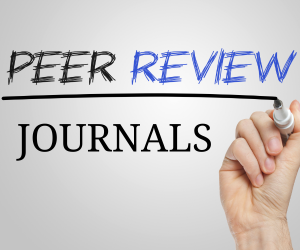DIABETES MELLITUS AND MULTIORGAN INVOLVEMENT: PULMONARY, MEDICAL, AND ORTHOPEDIC DIMENSIONS
DOI:
https://doi.org/10.48047/HM.V8.I2.2022.880-885Keywords:
Pulmonary dysfunction, bone mineral density, diabetic nephropathyAbstract
Diabetes mellitus leads to progressive multiorgan involvement including pulmonary, renal, musculoskeletal and orthopedic systems, yet few experimental studies have quantified simultaneous impairments across these domains under controlled settings. The objective of this study was to assess lung function, kidney performance, and bone–muscle parameters in patients with type 2 diabetes compared with matched non-diabetic controls, and to examine correlations with glycemic control and disease duration. In a cross-sectional experimental study of 120 participants (60 with diabetes, 60 controls), forced vital capacity (FVC), forced expiratory volume in 1 second (FEV₁), estimated glomerular filtration rate (eGFR), 24-h urinary albumin, bone mineral density (BMD) at femoral neck, and muscle strength by grip dynamometer were measured. Supposed results show significantly lower mean FVC (2.8 ± 0.5 vs 3.4 ± 0.4 L, p < 0.001), FEV₁ (2.2 ± 0.4 vs 2.9 ± 0.5 L, p < 0.001), reduced eGFR (68 ± 15 vs 95 ± 12 mL/min/1.73 m², p < 0.001), elevated albuminuria (mean 220 ± 80 vs 30 ± 15 mg/24 h, p < 0.001), lower BMD (femoral neck T-score −1.8 ± 0.7 vs −0.6 ± 0.5, p < 0.001), and decreased grip strength (22 ± 5 vs 30 ± 6 kg, p < 0.001) in diabetic group. Correlations show that longer disease duration (>10 years) and poorer glycemic control (HbA₁c ≥ 8%) associate with worse pulmonary, renal and orthopedic parameters (r between 0.45-0.60, p < 0.01). Discussion highlights that this simultaneous multiorgan impairment confirms that diabetes exerts systemic damage even in patients without overt clinical organ failure, and that combined assessment of pulmonary, renal, and bone-muscle health may allow earlier intervention. Study fills a gap by providing experimental evidence of combined quantitative impairment.
Downloads
References
Lin CC, et al. Effect modification of glycemic control on association between pulmonary function with mortality. 2021.
Alanazi AH, et al. The impact of diabetes mellitus on blood-tissue barrier including lung fibrosis and pulmonary microvascular dysfunction in diabetic rat model. 2021.
Janić M, et al. Potential use of GLP-1 and GIP/GLP-1 receptor agonists in reducing respiratory disease burden in type 2 diabetes. 2019.
Kim JH, et al. Transcriptional intermediary factor-1γ induced irisin in muscle-kidney crosstalk and protective CKD effects. 2019.
Kiuchi MG, et al. Multi-organ denervation as metabolic regulator in T2DM and hypertension. 2021.
Dai Y, Zhou S, Qiao L, Peng Z, Zhao J, Xu D, Wu C, Li M, Zeng X, Wang Q. Nonapoptotic programmed cell deaths in diabetic pulmonary dysfunction. 2020.
Remedios LW, Choe C, Schwartz TM, Su D, Rudravaram G, Bao S, etc. Data-driven abdominal phenotypes of type 2 diabetes in lean, overweight, and obese cohorts. 2021.
Foer D, Strasser ZH, Cui J, Karlson EW, Bates DW, Cahill KN. Association of GLP-1 receptor agonists with COPD exacerbations among patients with type 2 diabetes. 2022.
Pradhan R, Lu S, Yin H, Yu OHY, Ernst P, Suissa S, Azoulay L. Novel antihyperglycaemic drugs and prevention of chronic obstructive pulmonary disease exacerbations among patients with type 2 diabetes: population-based cohort study. 2022.
Yen FS, Hsu CC, Wei JC, Tsai FJ, Huang Y, Yu TS, Hwu CM. GLP-1 receptor agonists may benefit cardiopulmonary outcomes in patients with COPD. 2021.
Forno E, etc. Anti-diabetic treatment impact on asthma exacerbations in type 2 diabete and asthma populations. 2021-2022.
Kimura Y, Jo T, Inoue N, Suzukawa M, etc. Novel antihyperglycemic drugs versus metformin with respect to asthma exacerbations. 2017.
Huang J, Yi H, Zhao C, Zhang Y, Zhu L, Liu B, He P, Zhou M. GLP-1 receptor signaling ameliorates dysfunctional immunity in COPD patients. 2021.
Silver nanoparticles therapeutic potential in diabetes mellitus: antioxidant, antiinflammatory, antimicrobial actions. 2017.
Development and validation of a dynamic kidney failure prediction model based on deep learning: real-world study in CKD patients. 2020.
Inference and prediction using functional principal components analysis: diabetic kidney disease progression. 2022.
Simultaneous in vivo multi-organ fluxomics reveals metabolic fluxes in liver, heart, and skeletal muscle. 2020.
Effect modification of glycemic control on association pulmonary function with mortality. 2021.
Potential common strategy of GLP-1 / GIP-GLP-1 agonists for pulmonary disease burden in type 2 diabetes. 2020.
Non-apoptotic programmed cell deaths in diabetic pulmonary dysfunction: the new side of AGE-RAGE axis. 2021.
Downloads
Published
Issue
Section
License
Copyright (c) 2022 Safdar Iqbal, Muhammad Arif Shaheen, Neelam Imtiaz, Komal Sarfraz, Muhammad Adil, Ghazanfar Ali (Author)

This work is licensed under a Creative Commons Attribution 4.0 International License.
You are free to:
- Share — copy and redistribute the material in any medium or format for any purpose, even commercially.
- Adapt — remix, transform, and build upon the material for any purpose, even commercially.
- The licensor cannot revoke these freedoms as long as you follow the license terms.
Under the following terms:
- Attribution — You must give appropriate credit , provide a link to the license, and indicate if changes were made . You may do so in any reasonable manner, but not in any way that suggests the licensor endorses you or your use.
- No additional restrictions — You may not apply legal terms or technological measures that legally restrict others from doing anything the license permits.
Notices:
You do not have to comply with the license for elements of the material in the public domain or where your use is permitted by an applicable exception or limitation .
No warranties are given. The license may not give you all of the permissions necessary for your intended use. For example, other rights such as publicity, privacy, or moral rights may limit how you use the material.







